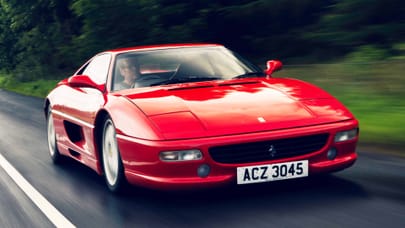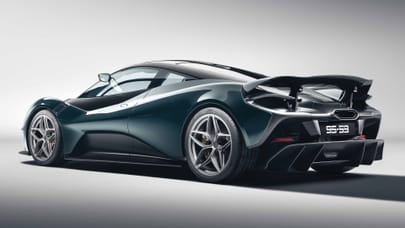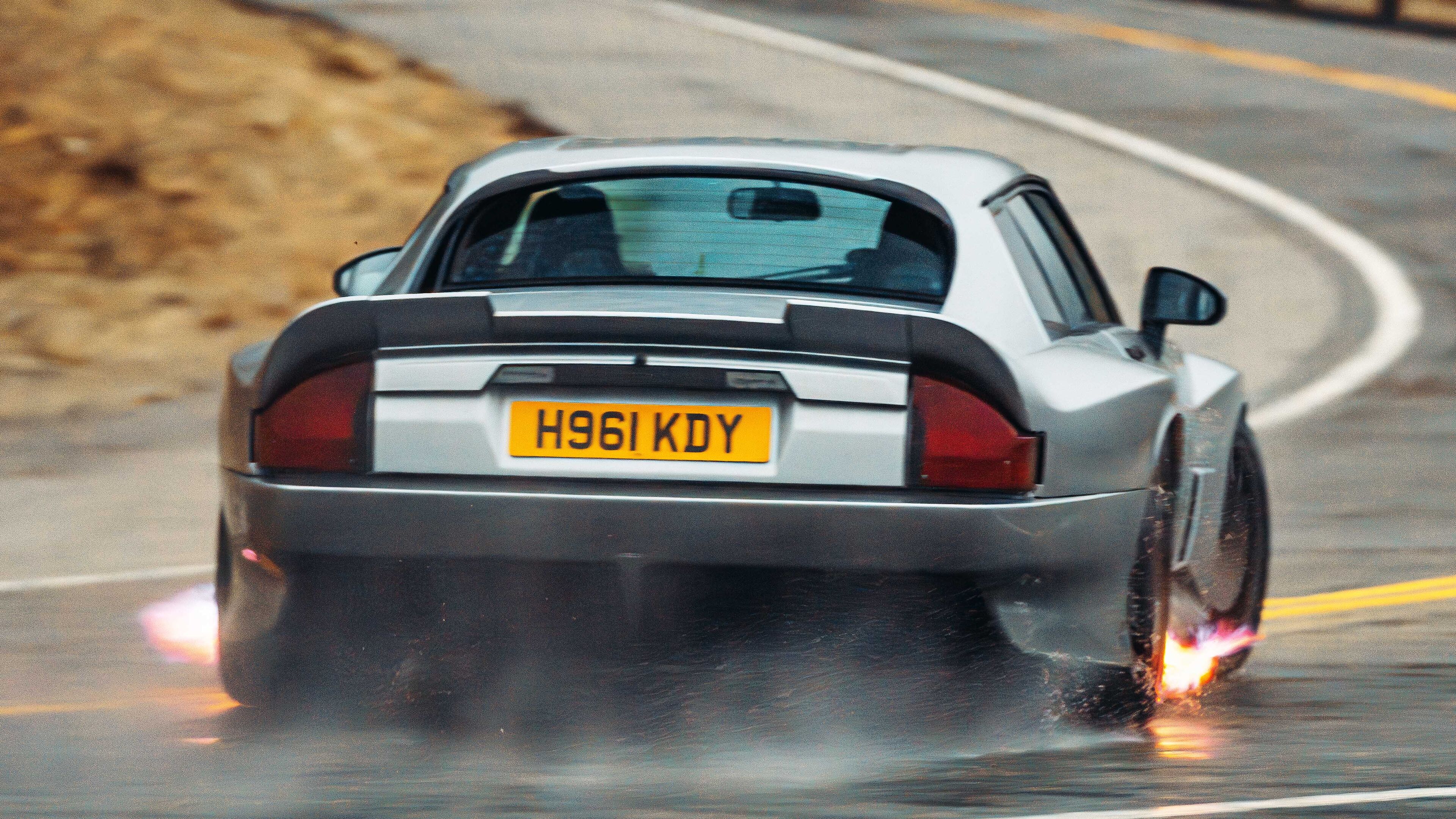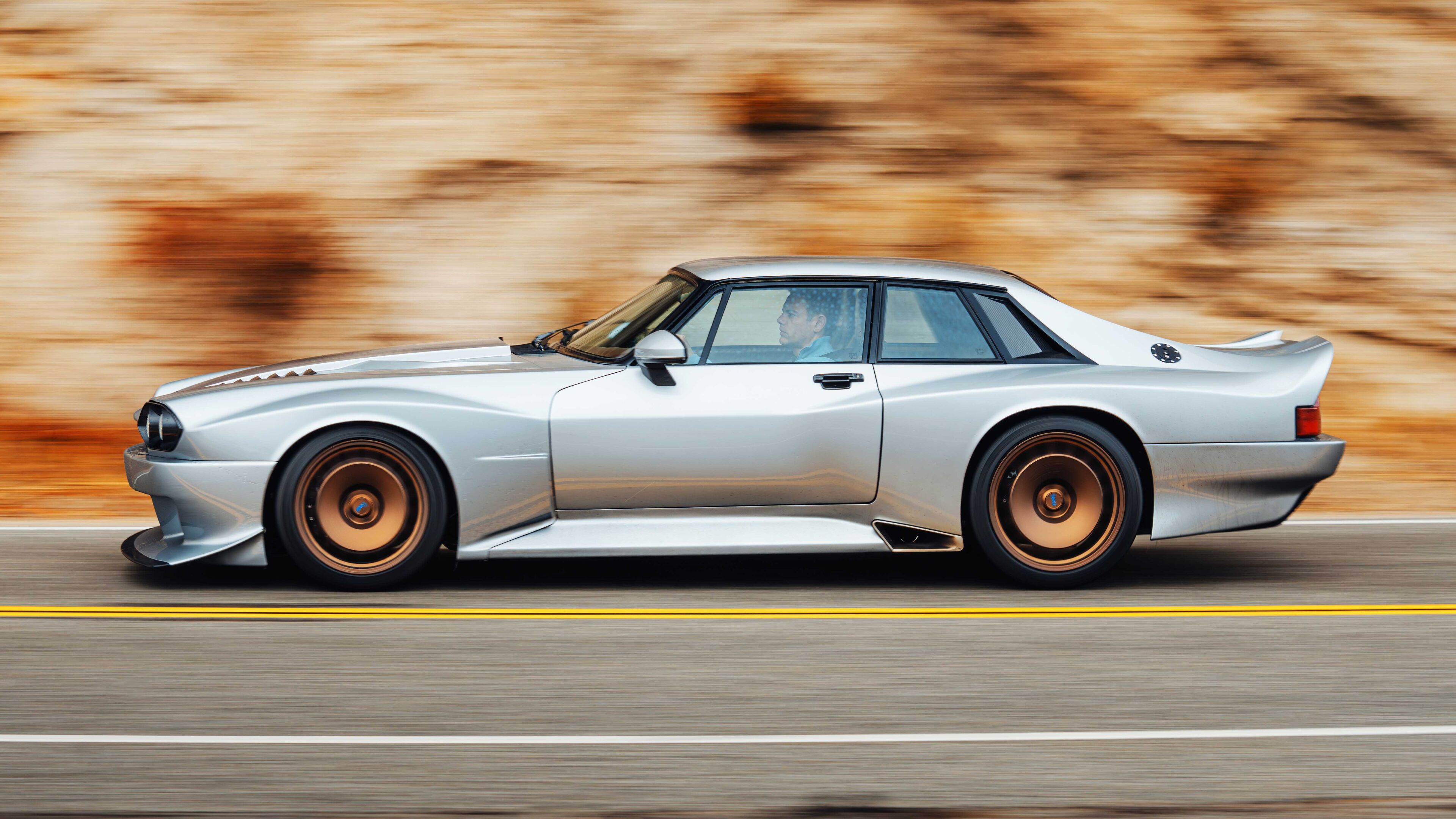
Top cat: flat out in the fire-breathing TWR Supercat
Unconvinced by Jaguar's recent rebrand? This might be the Jag you want...
Rip through second and third gears in the TWR Supercat and hear its 5.6-litre supercharged V12 shriek all the way up to the limiter at 7,750rpm, and it’s impossible not to care. Aside from the Pagani Utopia and GMA T.50, the combination of a mighty V12 engine and a manual gearbox is extinct.
So, despite costing around £300,000, this new Jaguar XJS based restomod finds itself as the bargain entry point to a very special niche by an order of magnitude. It’s also a delightfully outrageous riposte to Jaguar’s recent rebrand and all-EV future. Oh, and it’s a restomod that isn’t a 911. Hallelujah.
Of course, ‘not a 911’ is a double-edged sword. It immediately gifts the Supercat a freshness and generates huge intrigue, but it also means the newly revived TWR name is working with a platform that lacks many of the 911’s inherent advantages, the vast knowledge built up to successfully modify them and the endless ocean of high quality parts available from motorsport outfits and, indeed, Porsche Classic. The Jaguar XJS has motorsport pedigree and looks cooler with every passing year, but it’s not exactly a solid gold sports car superhero.
Photography: Mark Riccioni
The Supercat look is superhero. Or maybe supervillain. It would look perfect rolling through Gotham City on a dark, rainy night. The spec is brilliantly sinister, too. That dry-sumped blown 12 cylinder engine produces 660bhp and 538lb ft (even the final 6.0-litre XJR-S cars in 1993 had just 333bhp), the six-speed manual drives through a plated limited slip differential, there are six-piston calipers for the front brakes and adjustable ABS and traction control, as well as electronically adjustable dampers, a host of chassis strengthening measures and a much reduced kerbweight thanks, in part, to carbon fibre bodywork. Dripping wet – quite literally today in an uncharacteristically miserable southern California – the Supercat is 1,605kg.
On paper, then, this thing is off the scale exciting. The late Tom Walkinshaw’s outfit TWR built the XJS into a formidable Group A racecar back in the early 1980s, eventually evolving it far enough to secure the 1984 ETCC championship, giving Jaguar its first 24-hour race win (at Spa-Francorchamps) since the D-Type back in the 1950s, as well as conquering Bathurst in 1985. This level of expertise being poured into a new restomod seems irresistible. Plus, well y’know, manual V12.
However, there are also doubts. The new TWR is built around Tom’s son, Fergus, but isn’t the TWR of old that ruled touring cars, developed Jaguar’s Le Mans winning Group C cars and was feared and admired for its ‘creative’ approach to following rulesets. It’s effectively a startup with a strong familial connection to the original, but no real claim on the motorsport glory.
The styling – which is deliberately provocative and intended to be a bit Marmite – is credited to Kyzyl Saleem, and is his first full scale limited production project having found fame on Instagram as @the_kyza, with input from Porsche collector and social media personality Magnus Walker. So, could the Supercat be a bit too surface? A cool name, a dramatic aesthetic but little real substance?
Top Gear
Newsletter
Thank you for subscribing to our newsletter. Look out for your regular round-up of news, reviews and offers in your inbox.
Get all the latest news, reviews and exclusives, direct to your inbox.
Well, through rain, fog and rock fall, this is the place to find out. This car is a rolling prototype and about 80 per cent of the way there in terms of dynamics and fit and finish, and I’m the first person from outside of TWR’s inner circle to drive the Supercat in this near finished form. And I’m pleased to report there is substance here. It’s still a little rough around the edges and there’s work remaining to be done, but there are the bones of something very good. Which wasn’t necessarily a given.
First impressions are dominated by the heft of the clutch and brakes (the former is Countach-esque and the brakes are unassisted and demand racecar positivity), the unique noise that I’d probably describe as ‘dirty V12’, and the surprising poise of the thing. The engine doesn’t have a pureblooded high pitch musicality, but the raucous cocktail of induction bark, mechanical thrash, V12 scream and – at high revs – supercharger whine is absolutely fitting for a car that looks this aggressive, while the racket and flames on the overrun could trigger air raid warnings. Sense of occasion? I think we can tick that box with an indelible marker.
The race-derived electric power steering is slightly at odds with the weighty pedals, but does immediately create a sense of agility and there’s a precision to the way the Supercat peels into corners that makes it feel smaller and lighter than I’d expected. In fact, my suspicion was that you’d look out over that long bonnet and feel slightly detached from the front wheels and right over the rears. In reality, you feel right at the centre of the action and confident of everything that’s going on at ground level at either end. I love the six speed manual gearbox, too. Why did these things fall out of fashion?
More miles reveal fantastic traction (in stark contrast to the rough test mule that Ollie Marriage drove on track in the UK, and a good sign that the new TWR can solve engineering problems and refine the setup) and a really nice balance. In wet conditions the front pushes gently into understeer first, which can be easily balanced and reined in, before the car slips progressively into a more tail led angle of attack. It’s a cool feeling and the savagery of the engine noise is calmed by these easy manners. It should be said the engine’s progressive delivery helps here, too. It sounds monstrous and delivers big performance, but it does so in an extremely predictable way.
It’s born of real passion and a love and respect for Jaguar’s most glorious days
There are improvements required – the yawning gap between third and fourth gear needs to be addressed. The adjustable traction control is too abrupt. The power steering programming is inconsistent and it would disappear altogether around long left-handers, while low oil pressure led the engine management to cut power severely after long, fast right-handers. Funnily enough, back in the 1980s oil surge was one of the biggest problems to solve when developing the Group A cars. Even the unassisted brakes – which I really like – probably need servo assistance for most potential buyers. All things I’m confident TWR can sort.
However, the bigger challenge is building the Supercat to the standard required for the asking price. The interior needs Singer-style attention to detail, the bodywork needs to fit with millimetre precision and not rattle over rough surfaces. Everything needs to be perfect. Even then, selling 88 of these cars – commemorating Jaguar’s Le Mans win in 1988 – won’t be easy.
I wish TWR all the luck in the world, though. The Supercat might not have true motorsport pedigree, but it’s born of real passion and a love and respect for Jaguar’s most glorious days.
Trending this week
- Car Review
Volvo ES90











